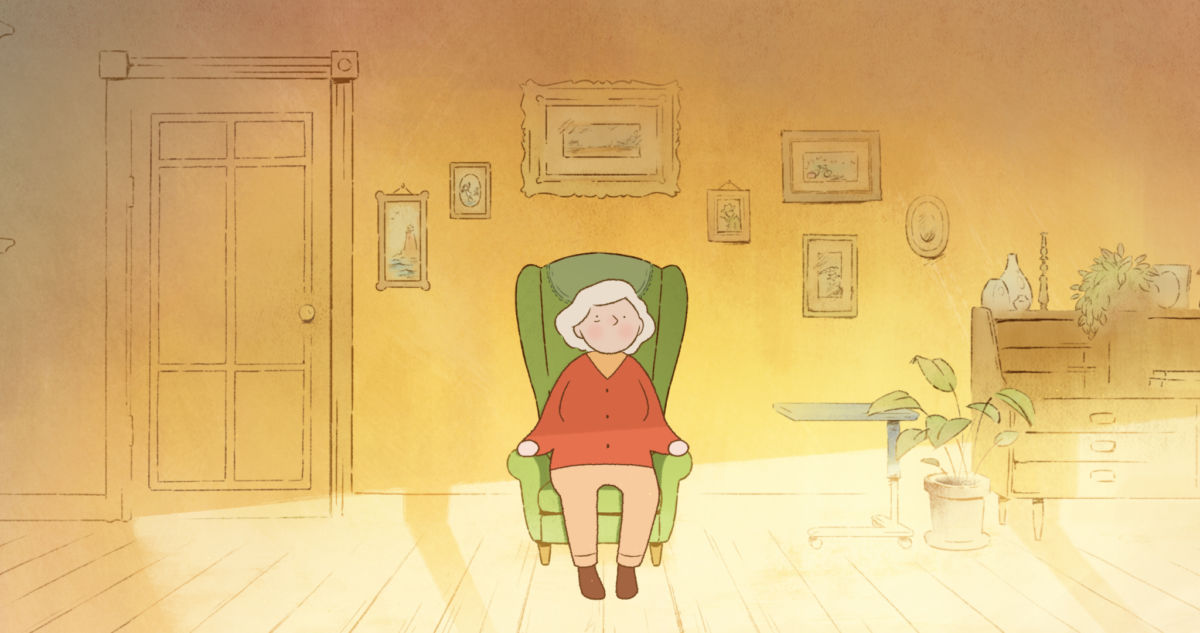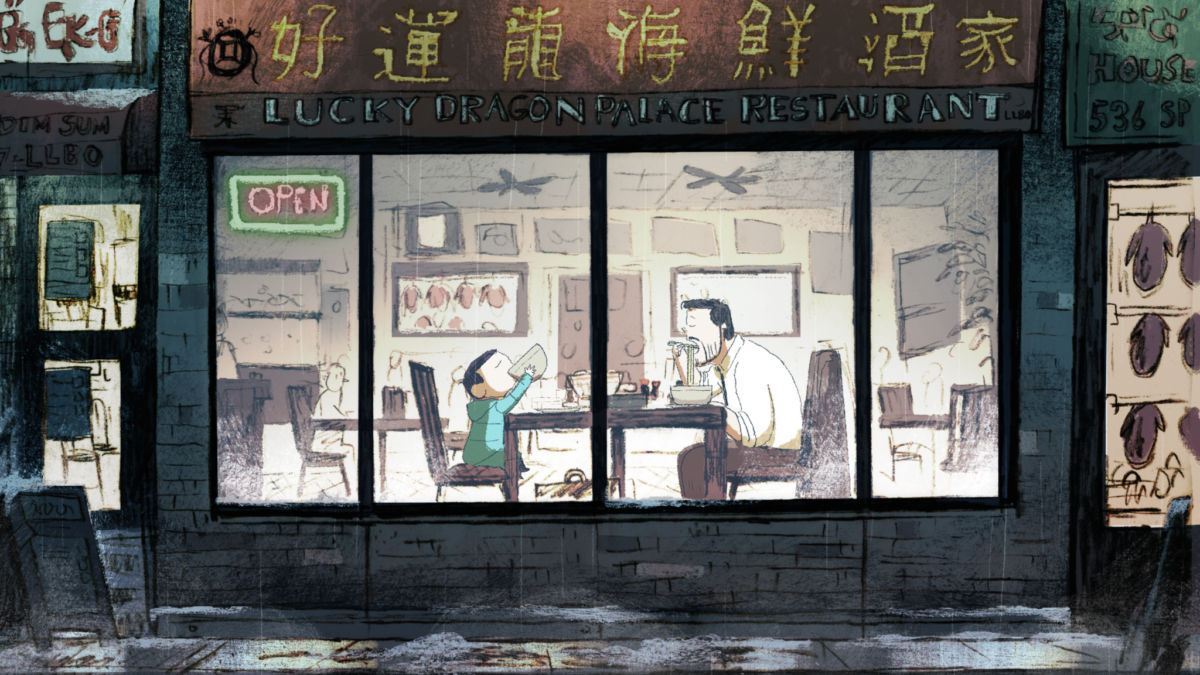The 2019 Oscars ceremony brings down the curtain on yet another awards season and, with it, the chance to applaud the efforts of so many individuals in the film industry. For the nominees in this year’s ‘Best Animated Short Film’, the 91st Academy Awards provide the opportunity to be victorious.
Away from the glare of the lights and extravagant setting, however, lie the private-yet-powerful stories that any viewer can relate to. For Alison Snowden and David Fine – of Snowden Fine Animation – receiving an Oscar nomination for Animal Behaviour was as much of an achievement for the staff at Vancouver General Hospital as it was for them.
The film’s dedication to those individuals is indicative of the moving tale that served as the story’s inspiration. In late 2017, a viral infection left Alison in desperate need of a double lung transplant. With time running out, the medical team’s decision to place her on an extracorporeal oxygenation (ECMO) machine was a huge risk. It was one that ultimately saved Alison’s life, however, after a suitable donor was found.

“Alison would not be here without what they did,” David revealed. “We are eternally grateful, and we felt compelled to want to give back, share their amazing dedication, and even love that they showed towards her, me and our daughter.”
Rather than develop a short that lacked their usual flair, Alison and David retained the humorous, cartoon aesthetic that has served them well. The design of the short’s anthropomorphised animals, coupled with their own issues, was in keeping with Alison’s and David’s work throughout their 32-year long professional careers, even if the more mature colour palette wasn’t.
“We always like to build our comedy around emotion and truth,” David explained. “That’s important to us, and we also like the drama in it, even though it is a comedy. There is almost always a funny way to look at anything. We hope that people are somewhat moved by the stories and their emotions. We wanted to strike that balance, and for people to care about these characters. We wanted to give it a kind of graphic novel look. We felt that the silly animals would sit nicely in that environment. So while it is still reminiscent of the look we do, we wanted it to be different.”
If Animal Behaviour’s inspiration is centred around physical well-being, Late Afternoon deals with the loss of cognitive function. Louise Bagnall, the short’s creative director, witnessed the effects of mental decline first hand, and saw it as a basis for the emotional-yet-uplifting tale she wished to tell based around main character Emily.
“Aspects of memory loss throw up so many questions about identity and our connections to those we are close to,” Louise explained. “For me it also raised questions about my own grandmothers – neither of whom suffered from dementia, but both had issues with memory loss and confusion. As a child I saw them as sweet old ladies but understood very little about who they were earlier in their lives. This was part of what I wanted to do in Late Afternoon, to explore Emily’s identity and memories. The idea was for the viewer to experience and learn about Emily’s life alongside her.”

Late Afternoon’s use of bright, inventive colours – coupled with its hand-drawn, fluid style of animation – provided a distinctive flair to Emily’s memories, and contrast the more linear aesthetic seen when Emily is pulled back into her real world.
“I’ve always been a fan of clean, simplified design when it comes to characters,” Louise stated. “With Late Afternoon I also wanted to embrace a looser approach to the character design in favour of more emotive and fluid animation. That’s something that has evolved gradually in my previous projects. The look of the film was the handmade feeling, which I think brings a certain warmth to the characters. The use of traditional media, pencil and watercolour, was there in the earliest drawings of Emily in my sketchbook and I wanted to retain this in the final look.”
Late Afternoon isn’t the only nomination to touch upon the experiences with a mental influence. Trevor Jimenez, director of Weekends, found that completing a decade-long project wasn’t the sole comfort he took when production wrapped. Confronting his experience of a broken home – Trevor’s mother and father had divorced when he was a child – was a painful memory that Trevor had major doubts about retelling.
“At one point I thought of turning all the characters into animals to create some distance from my own life,” Trevor divulged. “I remember reading this book called ‘Dinosaur Divorce’ when I was really young, which used dinosaurs to explain what divorce was. I thought the film might be more accessible to really small kids this way. Ultimately, I felt the more specific and personal I got with the details in the film, the more people would buy in emotionally to the story and feel the experience I had.”
Influenced by a number of different art styles, including European graphic novels, photography, and animated films by Michael Dudok de Wit, Trevor and his 27-strong team concocted a unique form of animation that conveys the plethora of emotions he felt during a turbulent period in his life.

“I really credit Chris Sasaki, the production designer on Weekends, with finding the look,” he admitted. “He had me draw all the backgrounds in charcoal first since I had specific memories of the many details in both homes, and used some special brushes in photoshop to paint everything with a subdued and limited color palette. The animation was all done in TV Paint, a French piece of animation software. I did a large portion of the animation, but had help from 5 friends who each took a small chunk of the film to animate.”
The short’s depiction of a child caught in the middle of their parents’ separation has resonated with many viewers. Trevor now hopes that more people from similar backgrounds will find some solace in watching Weekends, as those who have had already expressed how cathartic it was to see an accurate portrayal of this sobering subject.
“It’s a specific experience that isn’t happy or sad,” Trevor said. “It’s shared by many people and hard to sum up in words, which is why I think a film is a great way to express this feeling. I love some of the discussions I’ve had with parents and kids on both sides of the situation who have seen the film, and I hope it helps bridge the gap and create some empathy.”
Familial loss also played a key role in One Small Step’s development. The tale of a child – named Luna – who harbours ambitions of becoming an astronaut may not appear to be an original story on the surface. Dig deeper, however, and you will find a story of perseverance born out of tribute to the untimely and devastating death of Luna’s father.
Andrew Chesworth, Taiko Studios’ Head of Development, explained how his team’s tale of chasing your dreams took plenty of inspiration from a number of employees’ lives.
“We each dug deep from our own personal experiences to weave together the narrative,” Andrew revealed. “(Art Director) Bobby’s mother came to the United States from the Philippines and raised him by herself. (Studio CEO) Shaofu’s family moved from Wuhan, China to Raleigh, North Carolina and opened a tailor shop. My grandfather recognized and encouraged my passion for animation, and went out of his way to nurture that journey. All of us shared the dream of becoming animators just as Luna had a dream of becoming an astronaut. As we developed the theme of chasing your dreams, we discovered that we all had similar experiences in our careers.”
Thanks to the trio’s background at Disney, One Small Step’s animation style was curated with a clean, timeless feel to it. In keeping with the universal message of never letting go of your dreams, Bobby hopes its artistic appeal resonates as much in 50 years’ time as it does in the present day.
“If done right, the film will not be dated by the latest limits of the computer tools, but rather the artistic preferences of the filmmakers,” he said.
Fans of the Academy Awards will tune in to see arguably more illustrious gongs be handed out on the night than ‘Best Animated Short Film’. As these shorts prove, however, film length, celebrity status, or studio experience don’t matter if powerful, intimate stories can be told.
“The animated films nominated in that category all expressed powerful emotional truths and resonated with audiences in a huge way,” Shaofu summed up. “It’s hard to ignore a truly impactful movie whether it’s animated or live-action, and it’s always encouraging to see that kind of accomplishment get recognized.”
Some of the coverage you find on Cultured Vultures contains affiliate links, which provide us with small commissions based on purchases made from visiting our site. We cover gaming news, movie reviews, wrestling and much more.




